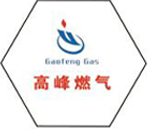
Nov . 16, 2024 06:36
Back to list
natural gas pressure reducing station
Natural Gas Pressure Reducing Stations An Overview
Natural gas is a vital energy source that powers homes, industries, and vehicles across the globe. However, to ensure that this gas is delivered safely and efficiently, it must be appropriately managed throughout its distribution network. One crucial component of this network is the pressure reducing station (PRS), which plays an essential role in the safe and effective delivery of natural gas to consumers.
The Function of Pressure Reducing Stations
Natural gas is transported through pipelines at high pressures to facilitate efficient long-distance delivery. However, before the gas reaches end-users, it needs to be reduced to a lower, more suitable pressure for residential and commercial use. This is where pressure reducing stations come into play.
A PRS is designed to reduce the high-pressure gas from the transmission pipelines to a lower, more manageable pressure suitable for distribution. This reduction process ensures that the gas maintains a consistent flow rate and pressure, crucial for preventing damage to appliances and infrastructure that utilize natural gas.
Components of Pressure Reducing Stations
Pressure reducing stations typically consist of several key components
1. Pressure Reducing Valves (PRVs) These valves are the heart of the PRS. They are responsible for regulating and lowering the gas pressure to predetermined levels. PRVs must be carefully calibrated to ensure the right pressure is maintained throughout varying demand conditions.
2. Filters These are installed to remove impurities and particulates from the gas, preventing contamination that could damage equipment downstream.
3. Flow Meters Accurate flow measurement is vital for monitoring gas consumption and managing supply effectively. Flow meters provide real-time data that can be used for billing and operational adjustments.
natural gas pressure reducing station

4. Safety Devices Safety is paramount in any natural gas facility. PRS units are equipped with safety features, such as pressure relief valves, to handle any unexpected pressure surges and leak detection systems to alert operators to potential hazards.
5. Telematics and Control Systems Modern PRS units often incorporate advanced technology for remote monitoring and control. These systems allow operators to track performance metrics and make real-time adjustments to ensure optimal operation.
Importance of Pressure Reducing Stations
The significance of pressure reducing stations cannot be overstated. They not only ensure the safe delivery of natural gas but also contribute to the overall efficiency of the gas supply chain. By maintaining appropriate pressure levels, PRSs help to minimize gas loss, enhancing the economic viability of natural gas distribution.
Moreover, these stations play a critical role in safety. High-pressure gas can pose serious risks if not managed correctly, including explosions and leaks. By regulating pressure effectively, PRSs protect both people and property, making them a crucial aspect of energy infrastructure.
Environmental Considerations
As the global community increasingly prioritizes sustainability, pressure reducing stations are also evolving to meet environmental standards. Many facilities are being upgraded to reduce methane emissions and implement energy-efficient technologies. Modular designs and innovative materials are being utilized to enhance the performance of PRS units, contributing to a greener energy future.
Conclusion
In summary, natural gas pressure reducing stations are an indispensable component of the natural gas distribution network. Their ability to safely and efficiently reduce gas pressure ensures that consumers receive a reliable energy supply. As the energy landscape continues to evolve, the integration of advanced technologies and environmental considerations will further enhance the role of PRSs in sustainable energy distribution. Their importance in our energy infrastructure will continue to grow, highlighting the need for ongoing improvements and innovations in this critical area of natural gas management.
Latest news
-
Safety Valve Spring-Loaded Design Overpressure ProtectionNewsJul.25,2025
-
Precision Voltage Regulator AC5 Accuracy Grade PerformanceNewsJul.25,2025
-
Natural Gas Pressure Regulating Skid Industrial Pipeline ApplicationsNewsJul.25,2025
-
Natural Gas Filter Stainless Steel Mesh Element DesignNewsJul.25,2025
-
Gas Pressure Regulator Valve Direct-Acting Spring-Loaded DesignNewsJul.25,2025
-
Decompression Equipment Multi-Stage Heat Exchange System DesignNewsJul.25,2025

